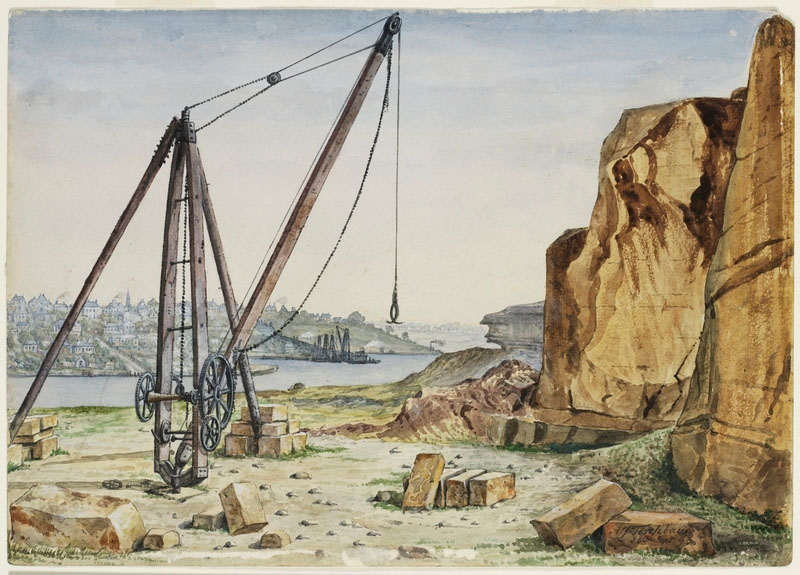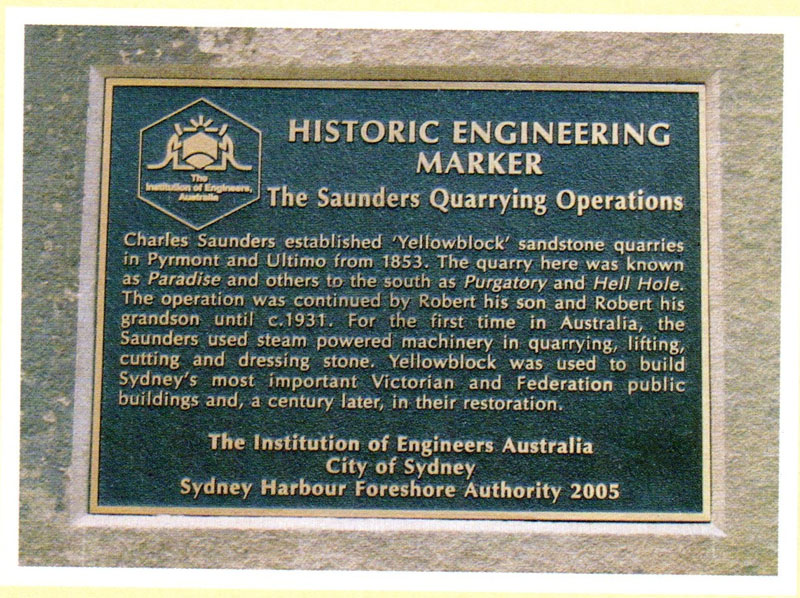Stonecutters
Date Built: 2009
Architect: Tzannes Associates
20 storeys, 107 apartments. Site of CSR storage tanks.
Stonecutters
1850 - 1880
This site spent most of the 20th century under storage tanks servicing the Distillery complex, but its name evokes the nearby quarrying which had transformed the area from the 1850s.
As early as the 1820s, small-scale quarrying began in the north-west end of the peninsula, where easily accessible stone cropped up near the water, sailing ships could load it as ballast, and barges could carry it to building sites. Masons came to enjoy the soft texture of the distinctive yellowblock sandstone, and architects recognised its fine qualities just when gold rushes funded the construction of many great public buildings in Sydney.
Demand soared, and this encouraged entrepreneurs to import and employ skilled masons, to adopt mechanised extraction, and to consolidate the industry. They also imported giant Clydesdale horses to haul huge blocks through the peninsula on newly made roads. One such enterprise was the Saunders family company which developed Paradise, Purgatory and Hellhole quarries on the western side of the peninsula where the sandstone was finer. The skilled masons of Pyrmont used their industrial muscle to form Australia’s first successful trade union.
The industry flourished until the 1920s, when architects began to prefer lighter, more ‘modern’ building materials, and one by one the quarries closed.
Sydney (actually Hawkesbury) sandstones formed millions of years ago, in a delta of Amazonian proportions. When quarried, Pyrmont’s self-colouring yellowblock is light grey in colour. Exposed to the air, it darkens to a warm yellow-brown.











